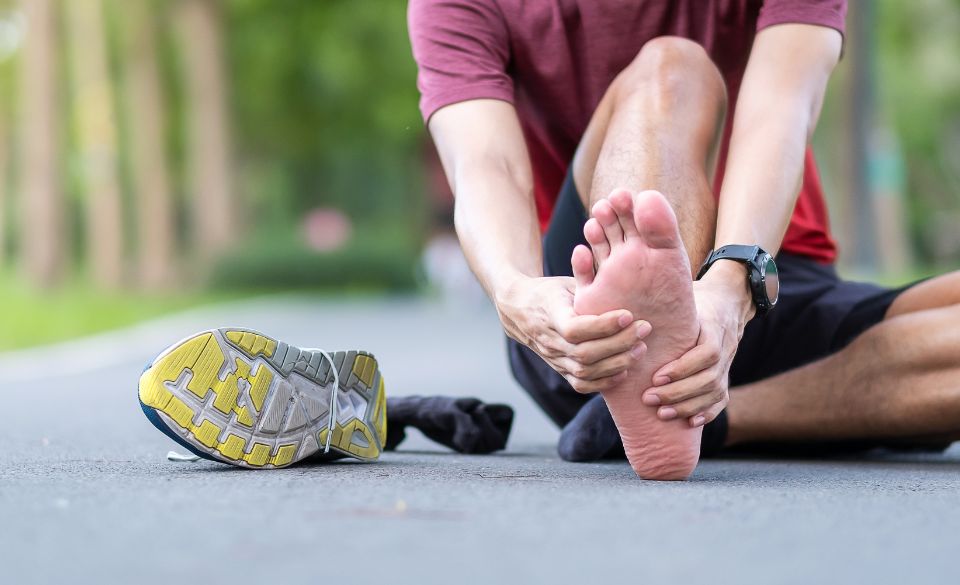
Exercises for Plantar Fasciitis: Relieve Pain and Promote Healing
Page Contents
Dealing with the pain and discomfort of plantar fasciitis can be frustrating and debilitating. This common condition, characterized by inflammation of the plantar fascia – the thick band of tissue that connects the heel bone to the toes – can make every step a painful ordeal. While various treatment options are available, exercises can play a crucial role in alleviating symptoms and promoting healing. In this article, we’ll explore some effective exercises for plantar fasciitis, backed by studies and expert recommendations.
Stretching Exercises: Easing Tension and Promoting Flexibility
Stretching exercises are a crucial component of managing plantar fasciitis. These exercises help to alleviate tension in the plantar fascia, increase flexibility, and promote healing. Incorporating regular stretching into your routine can significantly reduce pain and improve mobility. Let’s explore some effective stretching exercises for plantar fasciitis:
Calf Stretch
The calf muscles and Achilles tendon can contribute to tension and tightness in the plantar fascia. To perform a calf stretch, stand facing a wall and place your hands against the wall at shoulder height. Take a step back with one foot, keeping it straight and heel on the ground. Keep the front knee bent and lean forward, feeling the stretch in your calf and the back of your leg. Hold the stretch for 30 seconds and then switch legs. Repeat this stretch 3-4 times on each leg.
Plantar Fascia Stretch
This stretch specifically targets the plantar fascia, helping to relieve tension and promote flexibility. Sit on a chair and place one ankle on the opposite knee. Using your hand, gently pull your toes back towards you until you feel a stretch along the bottom of your foot. Hold the stretch for 30 seconds and repeat 3-4 times on each foot. You can also use a towel or resistance band looped around your toes to assist with the stretch.
Towel Stretch
The towel stretch is an excellent exercise for stretching both the calf muscles and the plantar fascia. Sit on the floor with your legs extended in front of you. Loop a towel around the ball of your foot and hold the ends of the towel with your hands. Gently pull the towel towards you while keeping your knee straight, feeling the stretch in your calf and the bottom of your foot. Hold the stretch for 30 seconds and repeat 3-4 times on each foot.
Toe Stretch
Stretching the toes can help relieve tension in the plantar fascia and improve flexibility. Sit on a chair and cross one leg over the other. Take hold of the toes of the crossed leg with your hand and gently pull them back towards you, creating a stretch along the bottom of your foot. Hold the stretch for 30 seconds and then switch to the other foot. Repeat this stretch 3-4 times on each foot.
Remember to perform these stretching exercises gently and without causing pain. It’s important to listen to your body and not overstretch, as this can aggravate the condition. Perform the stretches daily or as recommended by a healthcare professional or physical therapist. Alongside stretching, it’s essential to incorporate other treatment measures and wear supportive shoes to promote healing and prevent further strain on the plantar fascia.
Strengthening Exercises: Building Support for the Feet
In addition to stretching and other treatment options, incorporating strengthening exercises into your routine can be highly beneficial in managing plantar fasciitis. Strengthening exercises help build stability and support in the foot, reducing strain on the plantar fascia and promoting healing. Let’s explore some effective strengthening exercises specifically targeted for plantar fasciitis:
Toe Flexor Strengthening
Toe flexor strengthening exercises target the muscles in the toes and can help improve the stability and strength of the foot. One simple exercise is toe curls. Sit in a chair and place a small towel or cloth on the floor in front of you. Using only your toes, scrunch up the towel and pull it towards you. Repeat this motion for 10-15 repetitions. You can gradually increase the resistance by using a thicker towel or adding small objects like marbles to the towel.
Arch Strengthening
Strengthening the arch muscles is crucial for providing support to the plantar fascia. One effective exercise is arch lifts. Stand barefoot and place your weight evenly on both feet. Slowly raise your arches by pressing down through the balls of your feet and lifting the arches. Hold for a few seconds, then release. Aim for 10-15 repetitions. You can also try using a resistance band around your toes and pulling the band towards you, working against the resistance.
Calf Raises
Calf raises not only strengthen the calf muscles but also help improve the stability of the entire foot. Stand with your feet hip-width apart, holding onto a stable surface for balance if needed. Rise up onto the balls of your feet, lifting your heels as high as you can. Hold for a few seconds, then lower your heels back down. Aim for 10-15 repetitions. To make this exercise more challenging, try performing it on one leg at a time.
Ankle Strengthening
Strong ankles contribute to overall foot stability and can help alleviate strain on the plantar fascia. One effective exercise is ankle circles. Sit on a chair with your feet lifted off the ground. Rotate your ankles in circular motions, first clockwise and then counterclockwise. Perform 10-15 circles in each direction. You can also use a resistance band to provide additional resistance while performing ankle movements.
It’s important to note that these strengthening exercises should be performed with caution and under the guidance of a healthcare professional or physical therapist. They can assess your condition, provide specific recommendations, and ensure that you’re performing the exercises correctly to avoid further injury.
Footwear and Orthotic Exercises: Enhancing Support and Alignment
In addition to specific exercises, the right footwear and orthotic exercises can provide additional support and alignment to relieve plantar fasciitis pain. Choosing shoes with proper arch support and cushioning can make a significant difference. Orthotic devices, such as shoe inserts or heel cups, can also help distribute pressure and provide additional support to the arch of the foot.
A study published in the British Journal of Sports Medicine examined the effects of different types of footwear and orthoses on patients with plantar fasciitis. The findings revealed that participants who used footwear with arch support and cushioning experienced greater improvements in pain reduction and functional ability compared to those who used standard shoes.
Low-Impact Exercises: Maintaining Fitness without Aggravating Symptoms
When dealing with plantar fasciitis, it’s important to stay active while minimizing impact on the feet. Low-impact exercises, such as swimming, cycling, and using an elliptical machine, can help maintain cardiovascular fitness without exacerbating the symptoms. These exercises provide a great opportunity to engage in physical activity while giving the plantar fascia a chance to heal.
In a study published in the Journal of Science and Medicine in Sport, researchers investigated the effects of aquatic exercises on patients with plantar fasciitis. The results demonstrated that participants who engaged in aquatic exercise programs experienced significant improvements in pain reduction and functional ability.
Final Words
Incorporating exercises into your treatment plan for plantar fasciitis can be highly beneficial in relieving pain and promoting healing. Stretching exercises help to reduce tension and increase flexibility in the plantar fascia and surrounding muscles. Strengthening exercises focus on building support and stability in the feet, reducing strain on the plantar fascia. Footwear and orthotic exercises provide additional support and alignment, enhancing the effectiveness of exercises and reducing discomfort.
It’s important to note that while exercises can be effective for managing plantar fasciitis, it’s crucial to consult with a healthcare professional or physical therapist before starting any exercise program. They can assess your specific condition, provide personalized recommendations, and ensure that the exercises you perform are suitable for your individual needs.
Additionally, it’s essential to listen to your body and progress gradually. Start with gentle exercises and gradually increase intensity and duration as your symptoms improve. Be consistent with your exercise routine, but also give your feet sufficient rest and recovery time.
Remember that exercises alone may not be sufficient to address plantar fasciitis. It’s important to adopt a comprehensive approach that includes other treatments such as rest, icing, proper footwear, and potentially the use of orthotic devices. Your healthcare professional can guide you in developing a well-rounded treatment plan that incorporates exercises alongside other appropriate interventions.
In conclusion, exercises play a vital role in managing and alleviating the pain associated with plantar fasciitis. Stretching exercises, strengthening exercises, footwear and orthotic exercises, and low-impact exercises all contribute to reducing discomfort and promoting healing. By incorporating these exercises into your daily routine under the guidance of a healthcare professional, you can take significant steps towards relieving plantar fasciitis symptoms and regaining your mobility and quality of life.



